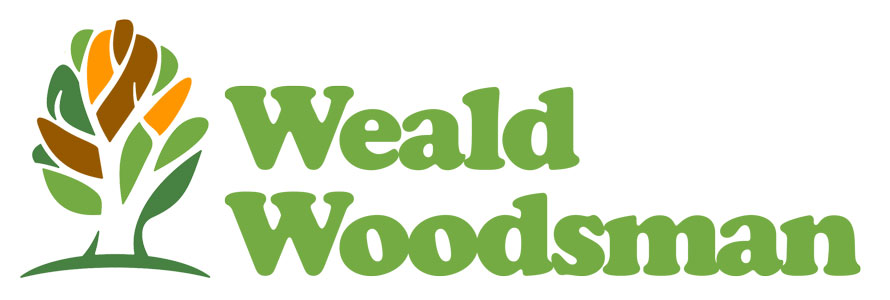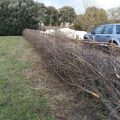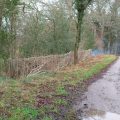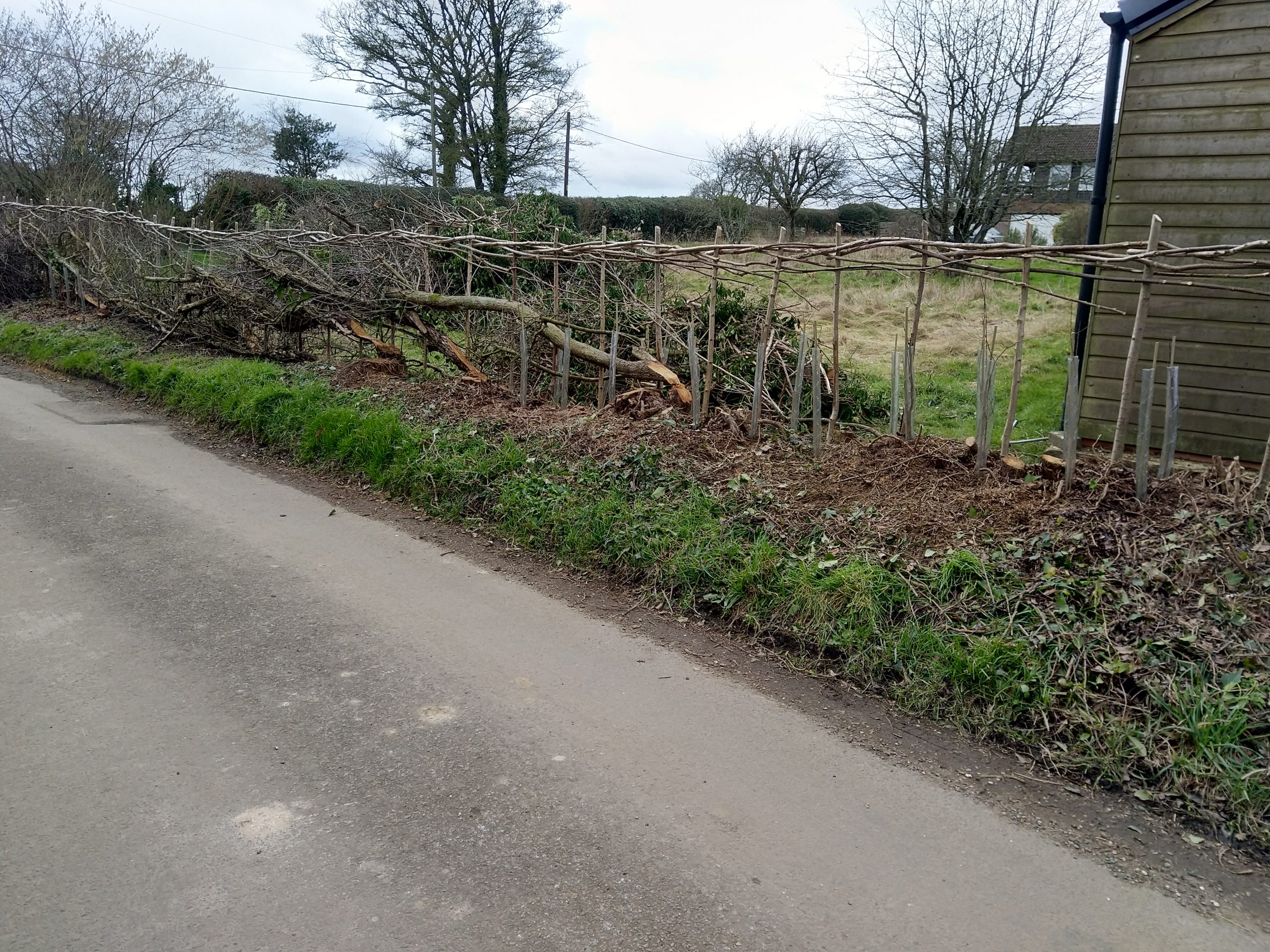
First job of the New Year was over near East Tisted in Hampshire and involved laying a 30 metre stretch of hedge adjacent to a minor road. The hedge itself was mainly hawthorn and was on the verge of being derelict; it had been topped by the electricity company and a large section was smothered in ivy.
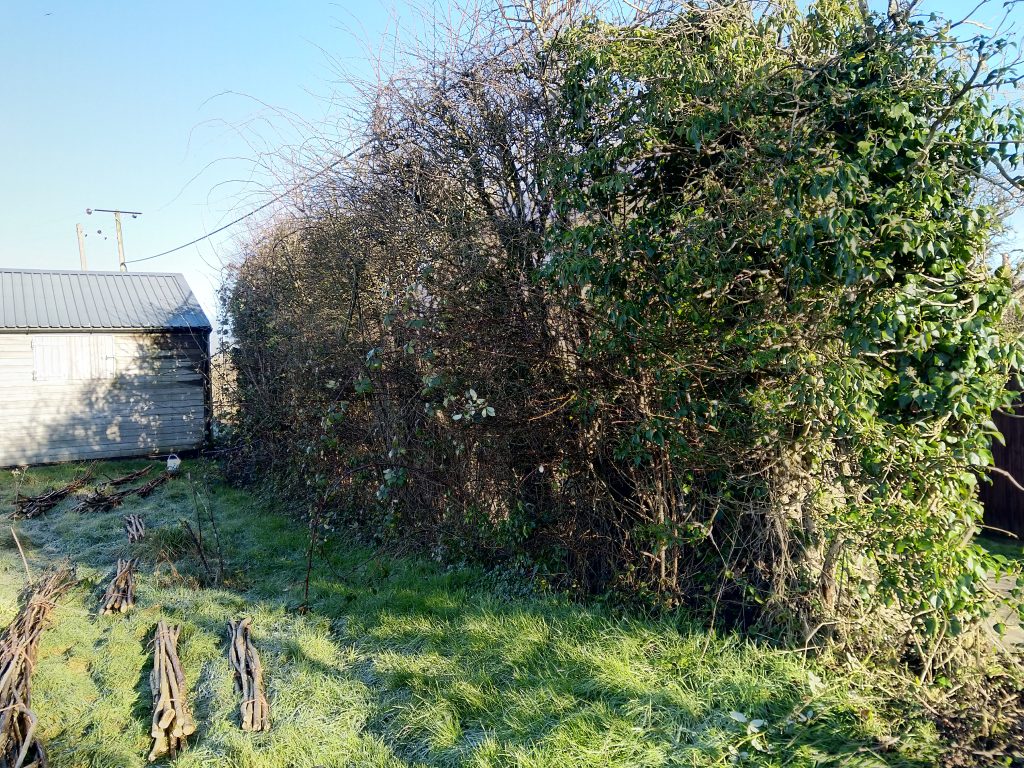
There were also a lot of dead stems in the hedge, and in some cases it was only the ivy that was keeping them from toppling into the lane.
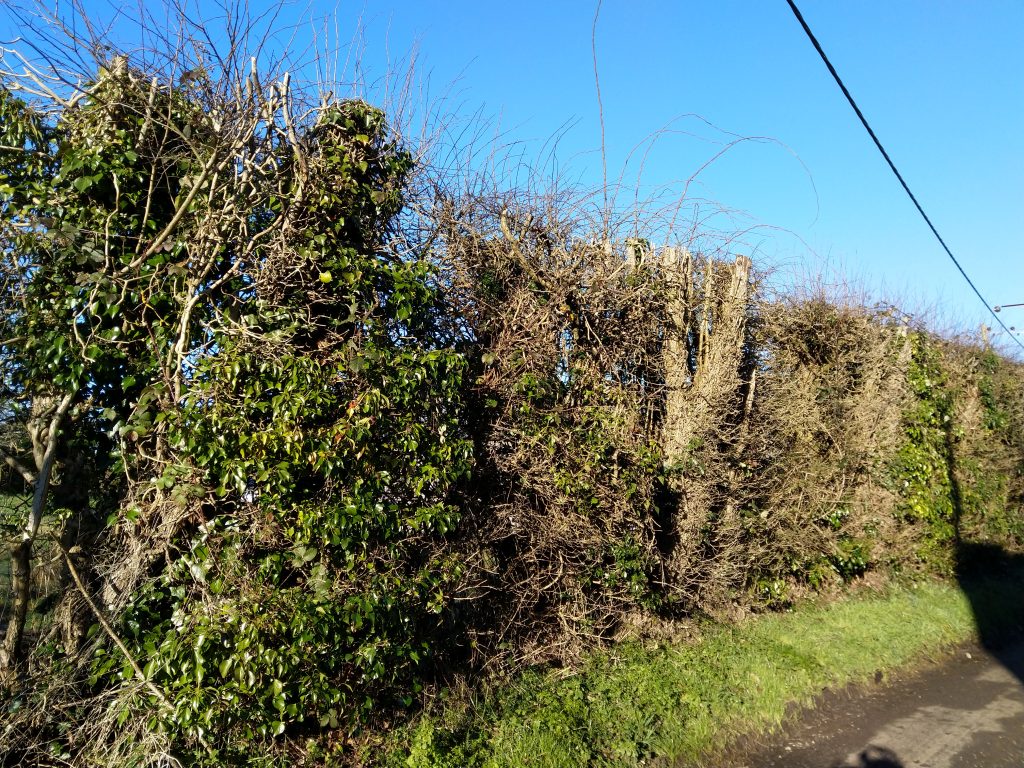
It was clear that this was going to be a challenge, but at least there were enough live stems to make something of a laid hedge. The only question in my mind was whether or not the larger hawthorn stems were too far gone to lay.
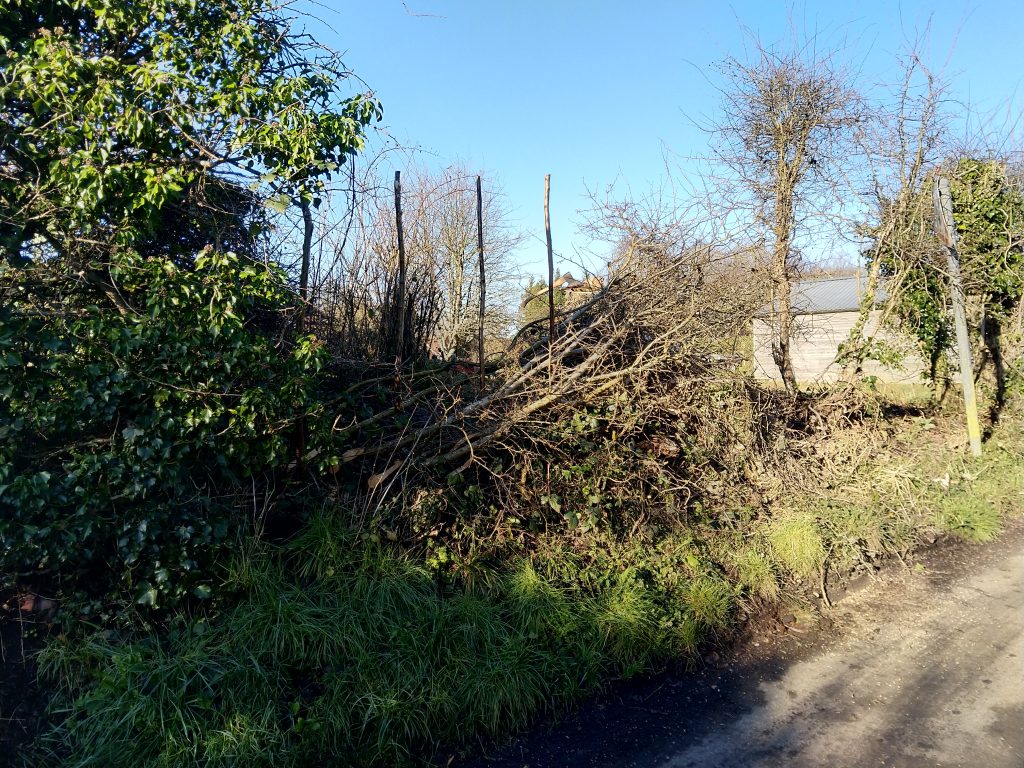
The first few stems were a delight to lay and because there was a slight change in slope, I laid them in the opposite direction to the rest of the hedge. So far, so good.

Then it was in to the meatier stems. Most of the dead wood was on the outside of the hedge, so I had to be extremely careful that nothing dropped into the road during the cutting. Before long, I had most of the stems down and had cleared out the ivy. There was also a large pile of brash accumulating too!
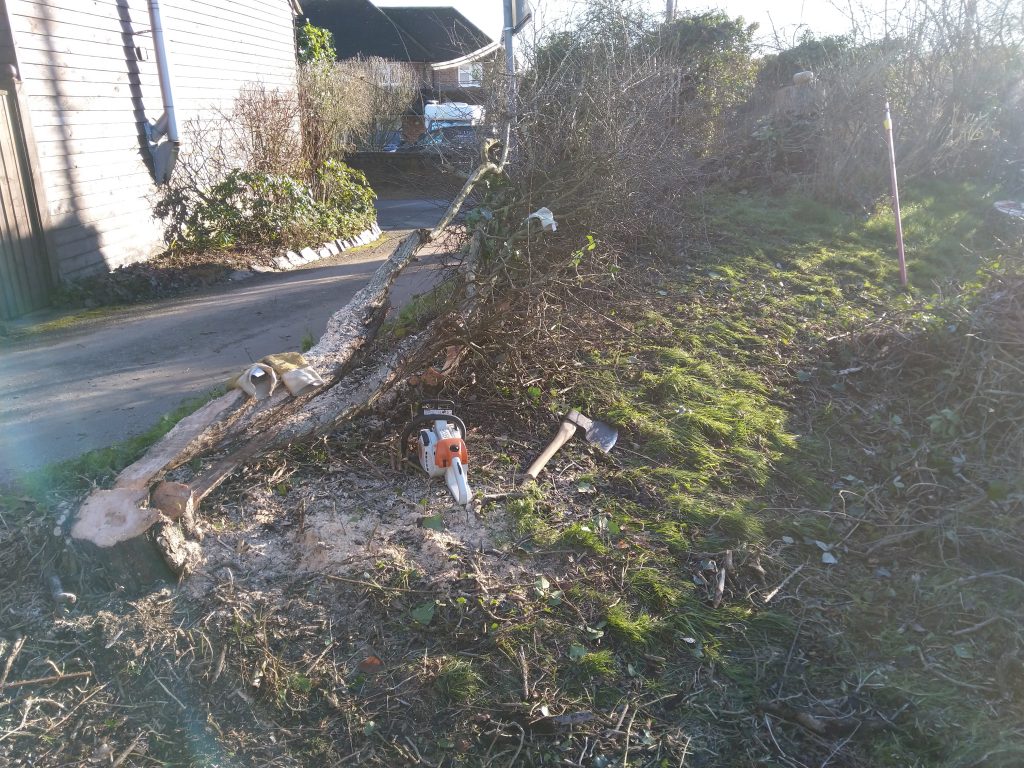
Unfortunately, the second half of the hedge proved more problematic. The big hawthorn stems had reached a stage where they were just starting to expire, meaning that although there was plenty of live wood, their stems were very brittle. This condition had undoubtedly been accelerated by them having been topped a few years ago. Try as I might, I just couldn’t prevent the pleachers from cracking off the stumps, no matter how careful I was to lay them down.
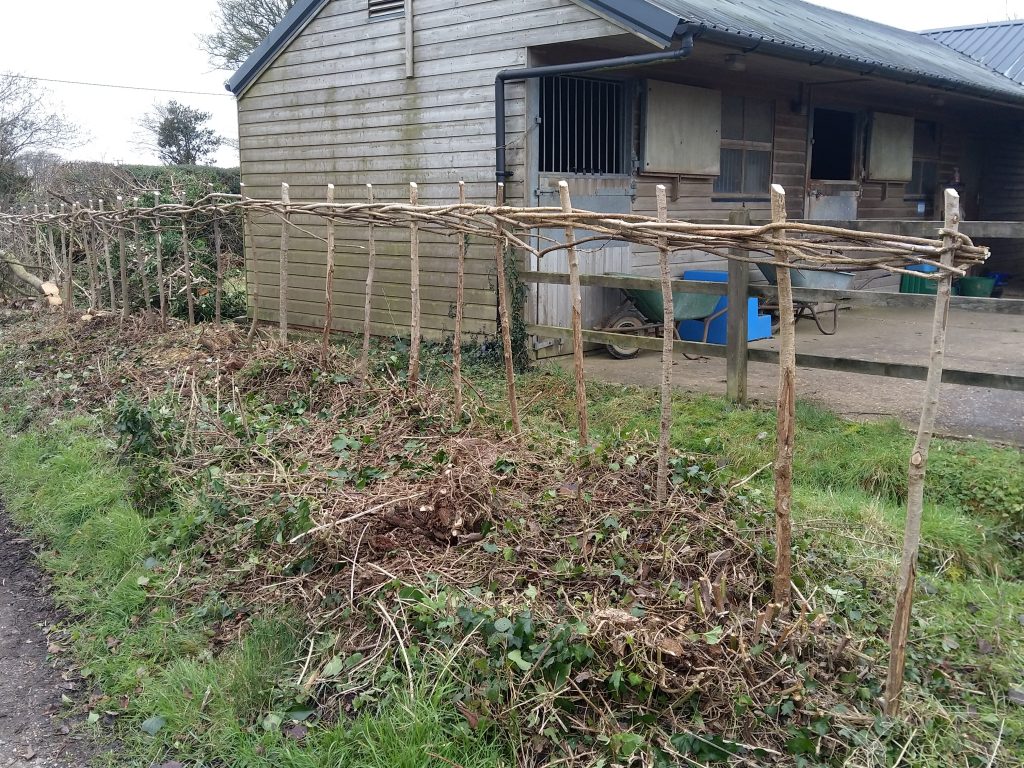
The last 6 or 7 metres of the hedge was devoid of stems and was made up of bramble and ivy, so once cleared out I was left with a gap of about 12 metres including the space left by the lost stems.
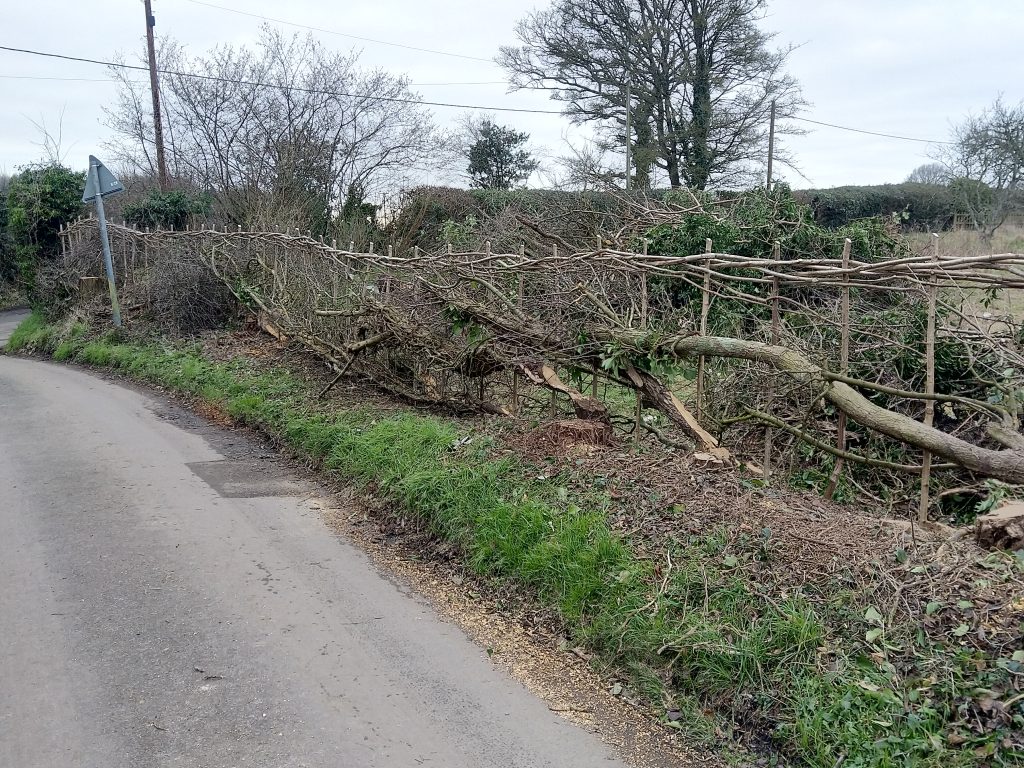
The rest of the hedge looks respectable, but to complete the job some new planting was the order of the day. I ordered up some native conservation hedgerow plants from my local nursery and returned a week later to complete the planting. I ordered enough hedging to infill the main gap as well as a few other small gaps further along the hedge. The hedgerow mix includes hawthorn, blackthorn, field maple, hazel and crab apple.
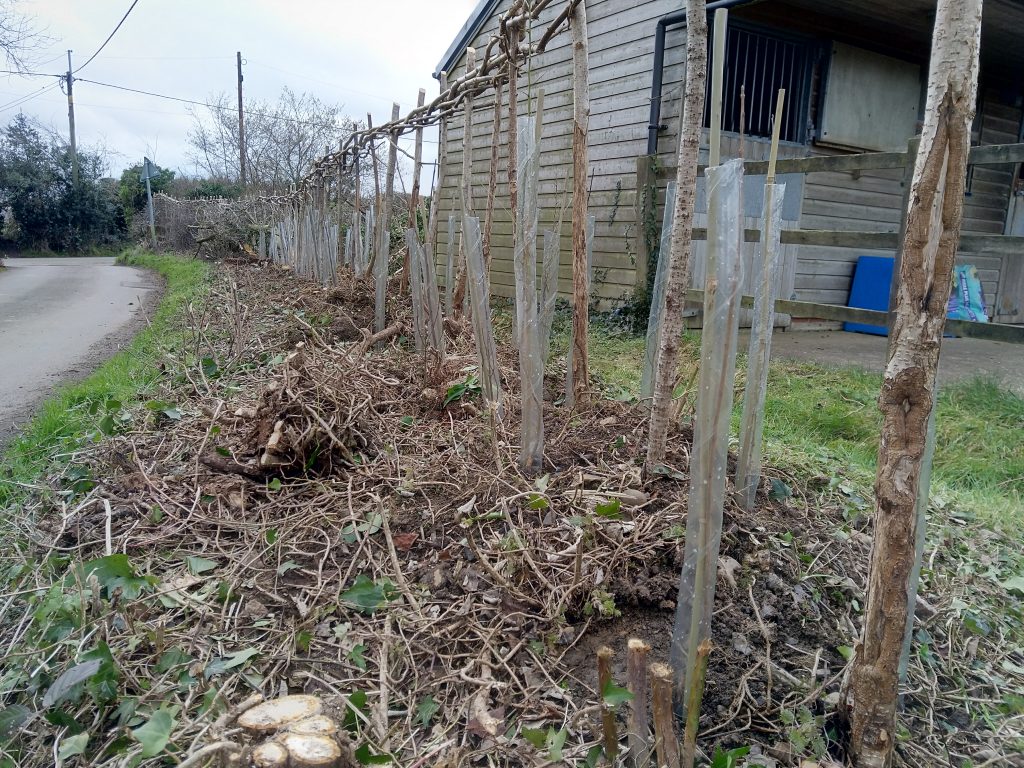
The hedge has now been given a new lease of life. Had it been left many more years, it would have become totally derelict and the only option would have been to coppice it to ground level and plant a totally new hedge. As it is now, the hedge will thicken up naturally from the base and even those stumps of the old hawthorn will coppice back with new growth in the spring. Combined with the new plants, it should become a beautiful hedgerow that will last for many years to come.

